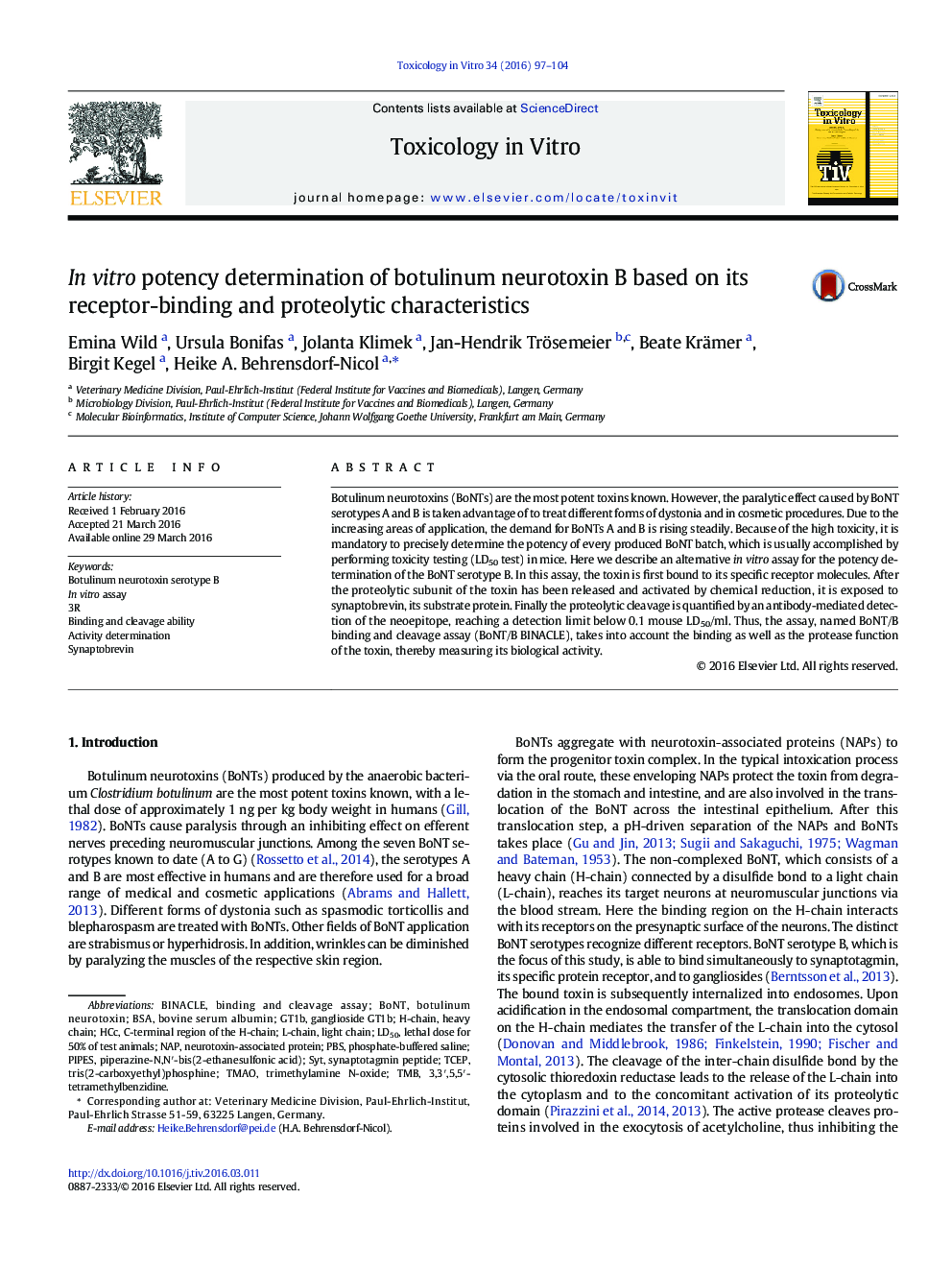| کد مقاله | کد نشریه | سال انتشار | مقاله انگلیسی | نسخه تمام متن |
|---|---|---|---|---|
| 5861109 | 1562711 | 2016 | 8 صفحه PDF | دانلود رایگان |

- The BoNT/B BINACLE assay can assess the specific activity and potency of BoNT/B.
- A receptor peptide and ganglioside GT1b are used to selectively bind BoNT/B.
- After binding, active BoNT/B is quantified based on its proteolytic activity.
- Less than 0.1 pg BoNT/B can be detected in a sample volume of 100 μl.
Botulinum neurotoxins (BoNTs) are the most potent toxins known. However, the paralytic effect caused by BoNT serotypes A and B is taken advantage of to treat different forms of dystonia and in cosmetic procedures. Due to the increasing areas of application, the demand for BoNTs A and B is rising steadily. Because of the high toxicity, it is mandatory to precisely determine the potency of every produced BoNT batch, which is usually accomplished by performing toxicity testing (LD50 test) in mice. Here we describe an alternative in vitro assay for the potency determination of the BoNT serotype B. In this assay, the toxin is first bound to its specific receptor molecules. After the proteolytic subunit of the toxin has been released and activated by chemical reduction, it is exposed to synaptobrevin, its substrate protein. Finally the proteolytic cleavage is quantified by an antibody-mediated detection of the neoepitope, reaching a detection limit below 0.1 mouse LD50/ml. Thus, the assay, named BoNT/B binding and cleavage assay (BoNT/B BINACLE), takes into account the binding as well as the protease function of the toxin, thereby measuring its biological activity.
Journal: Toxicology in Vitro - Volume 34, August 2016, Pages 97-104